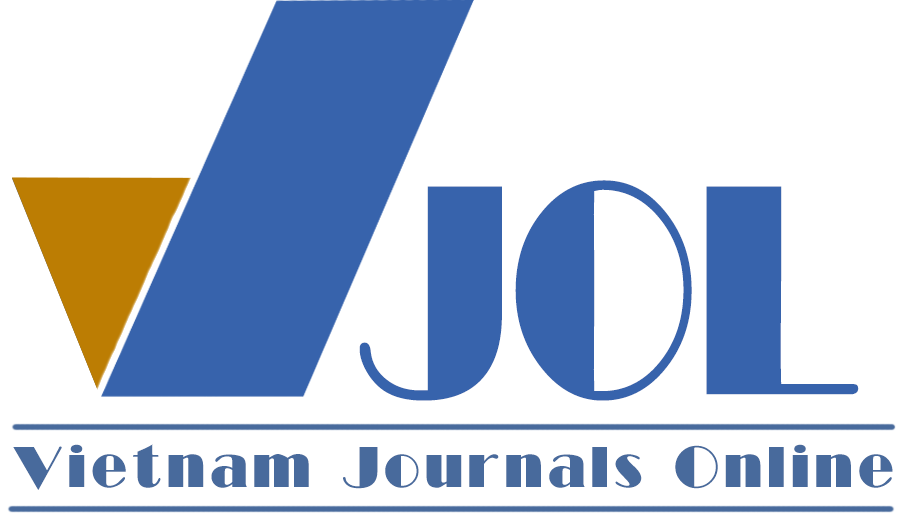Impact of national institutional quality on the foreign-direct-invested economic sector in emerging economies - The moderating role of financial development
Authors
DOI: https://doi.org/10.57110/vnu-jeb.v5i1.440Keywords:
Interregional tourism, travel motivation, tourism promotion, interregional travel intention, VietnamReferences
Adam, I., Adongo, C. A., & Amuquandoh, F. E. (2019). A structural decompositional analysis of eco-visitors’ motivations, satisfaction and post-purchase behaviour. Journal of Ecotourism, 18(1), 60-81. http://doi.org/10.1080/14724049.2017.1380657
Ajzen, I., & Fishbein, M. (1975). A Bayesian analysis of attribution processes. Psychological Bulletin, 82(2), 261. https://doi.org/10.1037/h0076477
Bagozzi, R. P., & Yi, Y. (1988). On the evaluation of structural equation models. Journal of the Academy of Marketing Science, 16, 74-94. https://doi.org/10.1007/BF02723327
Buhalis, D., Leung, X. Y., Fan, D., Darcy, S., Chen, G., Xu, F., & Farmaki, A. (2023). Tourism 2030 and the contribution to the sustainable development goals: The tourism review viewpoint. Tourism Review, 78(2), 293–313. https://doi.org/10.1108/TR-11-2022-0565
Chandon, P., Wansink, B., & Laurent, G. (2000). A benefit congruency framework of sales promotion effectiveness. Journal of marketing, 64(4), 65-81. http://doi.org/10.1509/jmkg.64.4.65.18071
Chen, Y., Shang, R., & Li, M. (2014). The effects of perceived relevance of travel blogs' content on the behavioral intention to visit a tourist destination. Computers in Human Behavior, 30(1), 787–799. https://doi.org/10.1016/j.chb.2013.05.019
Churchill Jr., G. A. (1979). A paradigm for developing better measures of marketing constructs. Journal of Marketing Research, 16(1), 64–73. https://doi.org/10.1177/002224377901600110
Crompton, J. L. (1979). Motivations for pleasure vacation. Annals of Tourism Research, 6(4), 408-424. https://doi.org/10.1016/0160-7383(79)90004-5
Eichelberger, S., Peters, M., Pikkemaat, B., & Chan, C. S. (2020). Entrepreneurial ecosystems in smart cities for tourism development: From stakeholder perceptions to regional tourism policy implications. Journal of Hospitality and Tourism Management, 45, 319–329. https://doi.org/10.1016/j.jhtm.2020.09.003
Erkuş-Öztürk, H. (2009). The role of cluster types and firm size in designing the level of network relations: The experience of the Antalya tourism region. Tourism Management, 30(4), 589–597. https://doi.org/10.1016/j.tourman.2008.10.008
Fornell, C., & Larcker, D. F. (1981). Evaluating structural equation models with unobservable variables and measurement error. Journal of Marketing Research, 18(1), 39–50. https://doi.org/10.1177/002224378101800104
González-Reverté, F., Gomis-López, J. M., & Díaz-Luque, P. (2022). Reset or temporary break? Attitudinal change, risk perception and future travel intention in tourists experiencing the COVID-19 pandemic. Journal of Tourism Futures. https://doi.org/10.1108/JTF-03-2021-0079
Graburn, N. H. (2004). Secular ritual: A general theory of tourism. In S. B. Gmelch (Ed.), Tourists and Tourism: A Reader (pp. 23-34). Waveland.
Gretzel, U., Zhong, L., & Koo, C. (2016). Application of smart tourism to cities. International Journal of Tourism Cities, 2(2). https://doi.org/10.1108/IJTC-04-2016-0007
Gupta, V. P. (2024). Leveraging digital transformation in marketing of home-stay businesses to promote tourism in the hospitality industry. In Technology and Luxury Hospitality (pp. 93–115). Routledge. https://doi.org/10.4324/9781003160137-6
Hossain, M. I., Akter, N., & Muzareba, A. M. (2024). Marketing management planning. In Marketing in a Transition Economy: New Realities, Challenges, and Prospects (pp. 37–73). Springer Nature Singapore. https://doi.org/10.1007/978-981-99-7096-3_3
Hultman, M., Skarmeas, D., Oghazi, P., & Beheshti, H. M. (2015). Achieving tourist loyalty through destination personality, satisfaction, and identification. Journal of Business Research, 68(11), 2227-2231. https://doi.org/10.1016/j.jbusres.2015.06.002
Israel, G. D. (1992). Determining sample size. University of Florida Cooperative Extension Service, Institute of Food and Agriculture Sciences, EDIS. https://www.psycholosphere.com/Determining%20sample%20size%20by%20Glen%20Israel.pdf
Jang, S., Bai, B., Hu, C., & Wu, C. M. E. (2009). Affect, travel motivation, and travel intention: A senior market. Journal of Hospitality & Tourism Research, 33(1), 51–73. https://doi.org/10.1177/1096348008329666
Kim, M. J., & Hall, C. M. (2019). A hedonic motivation model in virtual reality tourism: Comparing visitors and non-visitors. International Journal of Information Management, 46, 236–249. https://doi.org/10.1016/j.ijinfomgt.2018.11.016
Lee, G., Suzuki, A., & Vu, H. N. (2019). The determinants of detecting veterinary drug residues: Evidence from shrimp farmers in southern Viet Nam. Aquaculture Economics & Management, 23(2), 135-157. https://ideas.repec.org/p/ags/asae17/284875.html
Lee, H., Reid, E., & Kim, W. G. (2014). Understanding knowledge sharing in online travel communities: antecedents and the moderating effects of interaction modes. Journal of Hospitality & Tourism Research, 38(2), 222-242. https://doi.org/10.1177/1096348012451454
Luo, W., Tang, P., Jiang, L., & Su, M. M. (2020). Influencing mechanism of tourist social responsibility awareness on environmentally responsible behavior. Journal of Cleaner Production, 271, 122565. http://doi.org/10.1016/j.jclepro.2020.122565
Ma, J., Gao, J., Scott, N., & Ding, P. (2013). Customer delight from theme park experiences: The antecedents of delight based on cognitive appraisal theory. Annals of Tourism Research, 42, 359–381. https://doi.org/10.1016/j.annals.2013.02.018
Majewska, J. (2015). Inter-regional agglomeration effects in tourism in Poland. Tourism Geographies, 17(3), 408–436. https://doi.org/10.1080/14616688.2015.1029953
Nata, G. N. M., Anthony, S., & Yudiastra, P. P. (2021). Knowledge discovery and virtual tour to support tourism promotion. IAIC Transactions on Sustainable Digital Innovation (ITSDI), 2(2), 94–106. https://doi.org/10.34306/itsdi.v2i2.123
Nguyen, T. K. C., & Vu, H. P. (2022). Studying tourist intention on city tourism: the role of travel motivation. International Journal of Tourism Cities, 8(2), 497-512. http://doi.org/10.1108/IJTC-03-2021-0042
Nguyen, T. K. C., & Vu. H. P. (2022). Studying tourist intention on city tourism: The role of travel motivation. International Journal of Tourism Cities, 8(2), 497-512. http://doi.org/10.1108/IJTC-03-2021-0042
Nunnally, J. C., & Bernstein, I. H. (1994). Psychometric Theory (3rd ed.). McGraw-Hill.
Patandianan, M. V., & Shibusawa, H. (2020). Evaluating the spatial spillover effects of tourism demand in Shizuoka Prefecture, Japan: an inter-regional input–output model. Asia-Pacific Journal of Regional Science, 4(1), 73-90. http://doi.org/10.1007/s41685-019-00111-0
Peattie, K., & Peattie, S. (1995). Sales promotion–a missed opportunity for servicesmarketers? International Journal of Service Industry Management, 6(1), 22-39. https://doi.org/10.1108/09564239510078830
Ponkratova, L. A., Feoktistov, S. V., Adashova, T. A., Nikolskaya, E. Y., & Livson, M. V. (2021). Tourism development prospects in the context of global socio-economic trends. Journal of Environmental Management and Tourism, 11(8), 1988–1993. https://doi.org/10.14505//jemt.v11.8(48).02
Psyllidis, A., Yang, J., & Bozzon, A. (2018). Regionalization of social interactions and points-of-interest location prediction with geosocial data. IEEE Access, 6, 34334–34353. https://doi.org/10.1109/ACCESS.2018.2849423
Rizaldi, A. S., Rumanti, A. A., & Andrawina, L. (2024). Sustainable tourism industry in Indonesia through mapping natural tourism potential: Taxonomy approach. Sustainability, 16(10), 4201. https://doi.org/10.3390/su16104201
Swan, J. (1981). Disconfirmation of expectations and satisfaction with a retail service. Journal of Retailing, 57(3), 49–66.
Valedinskaya, E. N., & Astafeva, O. A. (2018). Innovative methods for demand stimulation in tourism industry. Astra Salvensis, 6(S), 613-626.
Zhu, Y., Chai, S., Chen, J., & Phau, I. (2024). How was rural tourism developed in China? Examining the impact of China’s evolving rural tourism policies. Environment, Development and Sustainability, 26(11), 28945-28969. https://doi.org/10.1007/s10668-023-03850-5
Downloads
Downloads
Published
Abstract View
PDF Downloaded
How to Cite
Issue
Section
License
Copyright (c) 2025 Nguyen Thi Khanh Chi, Vũ Hoàng Nam, Nguyễn Thị An Ly, Phạm Thu Hương

This work is licensed under a Creative Commons Attribution-NonCommercial 4.0 International License.
by VNU Journal of Economics and Business






